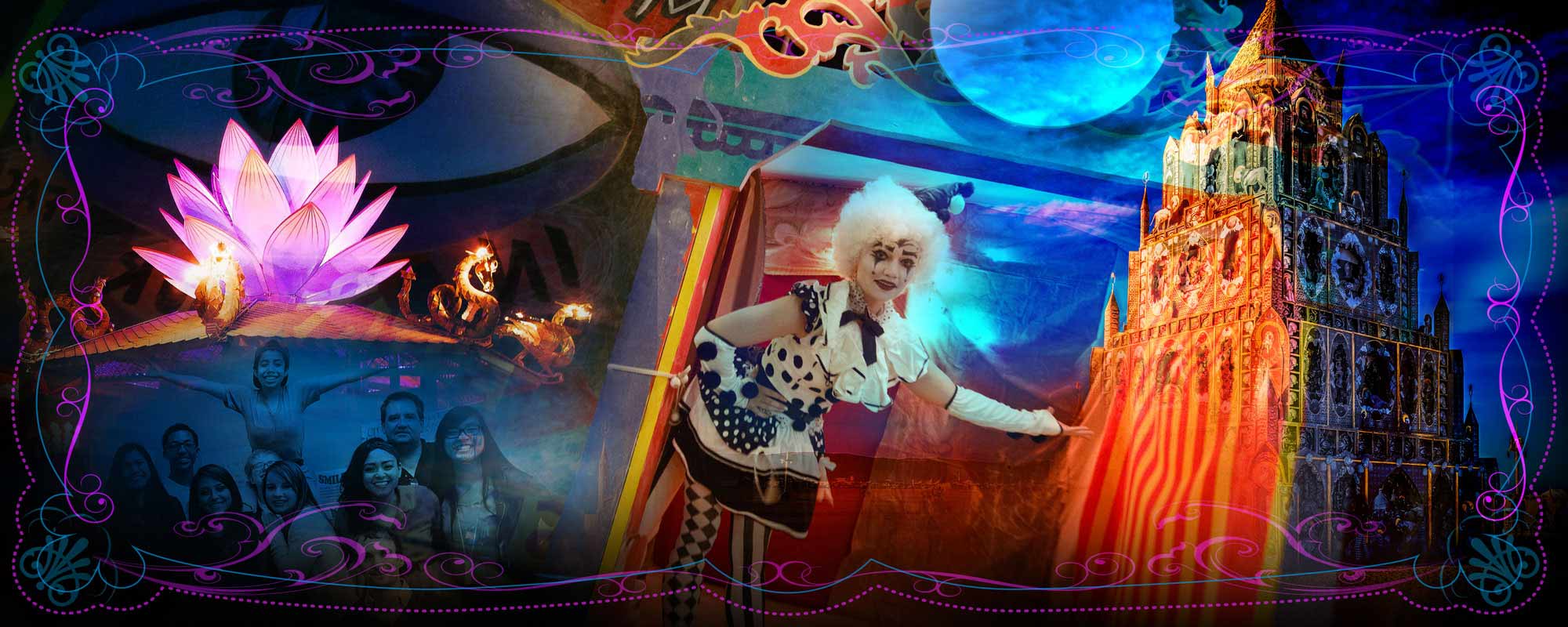Creative expression and civic mindedness influence everything we do. Infusing life with creativity, and inspiring people to act, to participate, and to lead, is the Burning Man way.
One of the best ways to understand the global impact of Burning Man is through the spread of the art.
The Temple, first created by participant David Best in 2000, is now one of the most globally meaningful symbols of Burning Man, and in 2015 there were five of them around the world. Best and his teams built three: one in Derry-Londonderry, Northern Ireland, one in Sonoma County, California, and one in Hayes Valley in San Francisco. A team of 20 volunteers led by Michael Verdon built and burned the Temple of Transformance on the campus of George Mason University in Virginia. And the Temple of Promise in Black Rock City was built by Jazz Tigan and the Iron Crew. Each of these grand, fleeting monuments served as a vessel for both the joy and grief of a community.
Iconic sculptural works from Black Rock City found permanent and rotating homes in populous urban settings this year, including Marco Cochrane’s “Bliss Dance” in Las Vegas, “Truth Is Beauty in San Leandro, California, and Laura Kimpton’s “BELIEVE” letters, which were welcomed to Reno’s downtown City Plaza at the close of 2015.
With the integration of the Black Rock Arts Foundation into Burning Man Project completed, the Burning Man Arts program was able to expand its curriculum of artist resources in 2015. Alongside the annual Desert Arts Preview — which provides an opportunity for the community to learn about playa art projects before the Black Rock City event — Burning Man Arts held its first ever Artists’ Symposium, a daylong conference for Burning Man artists and arts workers to share skills, teachings, and resources with each other.
And no year of Burning Man Arts would be complete without another lavish, lovely Artumnal Gathering, a fundraiser for Burning Man Project to support Burning Man Arts and Global Arts Grants. We honored Nick Morgan with the Affinity Award in recognition of his generous dedication of time and wisdom over the past eight years. Nick is a longstanding volunteer co-producer of the Artumnal Gathering and advisor to the Black Rock Arts Foundation.
The work of Burning Man artists is civic work. It brings people together in shared spaces to accomplish something that elevates the human spirit. There is a continuum of participant to practitioner, of creative citizen to artist. Burners apply their abilities in logistics, aesthetics, and sheer endurance to education, clean-up, and disaster relief as naturally as they do to welding metal or programming light arrays.
In one of this year’s most impressive expressions of the symbiotic relationship between arts and civics, a group of Burners in Washington, D.C., pulled off what to many seemed unthinkable: a burn on the Mall. Yes, The National Mall in Washington, just steps from the White House and down the road from the U.S. Capitol. Event organizers came together to produce a two-day event called Catharsis, which combined Burning Man culture with political activism and culminated with the burning of an effigy. The burn marked the first time since World War II that a bonfire has been permitted on the National Mall.
Our very own Burners Without Borders (BWB), meanwhile, has encouraged this confluence of art and civic work. Its goal has been to unlock the creativity of local communities to solve problems and to bring about meaningful change.
Since its inception in 2005 with relief efforts after Hurricane Katrina, BWB has initiated over 135 grassroots projects in 24 countries.
In 2015, BWB celebrated its 10th anniversary and boasted 19 active chapters. It also announced the transition to Burning Man Project, bringing BWB into the fold as an official program of Burning Man Project in the newly formed Art & Civic Engagement Department. In this transition, Carmen Mauk passed the torch of BWB leadership to former BWB board member Christopher Breedlove.
In 2015, BWB started to broaden its concept of what “disaster” means in terms of relief efforts. Beyond natural disasters, there are many types of disasters that happen all over the world, including social, humanitarian, economic and ecological, and BWB is learning to respond to those as well. BWB has evolved to become an ongoing partner to communities focusing on long-term resiliency and activating an engaged citizenry.
2015 Burners Without Borders activities include:
- Providing support and educational services to the Lake County Tool Library in California, working on the disaster left by wildfires.
- Supporting its sister organization, Communitere, as it set up shop in its third location, Nepal, after the earthquakes there.
- Launching a reimagined version of their “BWB Day of Service,” reframing it as the “128 Initiative,” a challenge to each of the Burning Man Regional areas to start a civic project. The initiative received 21 projects from six countries and 11 U.S. states. Collectively the projects engaged 1,981 people.
In Texas, Burners Without Border Corpus Christi (BWB-CC) continued work on the Burner Beach project, in which they adopted over seven miles of beach used for recreational activities. What started as eight friends cleaning up the beach has turned into seasonal events on the land that include not only a beach clean-up but an effigy burn. The volunteers invite locals and visitors to join in on the fun and educate them about responsible land usage and Leave No Trace efforts.
Burning Man Project believes that people have the inherent capacity to solve their own problems, and that social transformation is within reach of all communities. To promote this concept, BWB sparks new initiatives through two micro-grant programs. These give honoraria to projects around the globe that can leverage small amounts of money into big impact. Ten projects and organizations received BWB grants in 2015, and three received Walk the Talk grants.

